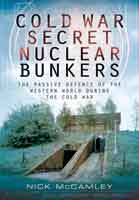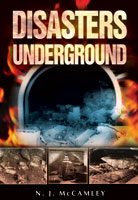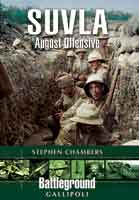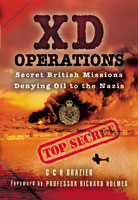Secret History of Chemical Weapons (Hardback)
By
N J McCamley
Imprint: Pen & Sword Military
Pages: 216
ISBN: 9781844153411
Published: 16th March 2006
Last Released: 1st August 2007
Imprint: Pen & Sword Military
Pages: 216
ISBN: 9781844153411
Published: 16th March 2006
Last Released: 1st August 2007
You'll be £19.99 closer to your next £10.00 credit when you purchase Secret History of Chemical Weapons. What's this?
+£4.99 UK Delivery or free UK delivery if order is over £40
(click here for international delivery rates)
Order within the next 3 hours, 40 minutes to get your order processed the next working day!
Need a currency converter? Check XE.com for live rates
(click here for international delivery rates)
Order within the next 3 hours, 40 minutes to get your order processed the next working day!
Need a currency converter? Check XE.com for live rates
| Other formats available - Buy the Hardback and get the eBook for free! | Price |
|---|---|
| Secret History of Chemical Weapons ePub (2.9 MB) Add to Basket | £6.99 |
Chemical weapons, banned under the Geneva Conventions, are the subject of revulsion and contempt to fighting men. Yet as Weapons of Mass Destruction no country with significant military capacity is able to afford to ignore them. They became, after an initial period of use during the Great War, weapons of deterrent. Despite the apparent military misgivings, much public hysteria about the horrors of chemical warfare was whipped-up by the media throughout the inter-war years. The book looks at the way in which this hysteria was manipulated and channelled by the British Government to ensure the establishment of a powerful and effective civilian anti-gas air raids precaution mentality which was then insidiously refocused upon the real threat, which was from high explosives and incendiary bombs. A major chapter is devoted to the use of chemical weapons in WW1, which was seldom successful and often counter-productive being indiscriminate in their effect. Another chapter covers the Italian use of CW in Ethiopia and by the Japanese against Chinese troops and civilians in the Sino-Japanese War. The latter part of the book examines the way in which the chemical warfare initiative moved away from the domination of the chemical industry into the control of the intelligence services through the Cold War years. Paranoia, and the irrational assumption that whatever weapons one side had then the other must have developed something even more frightening, led to the accumulation of vast deterrent stockpiles of weapons ' mainly nerve gas projectiles. By the early 1990s the magnitude of these stockpiles frightened governments into a programme of mutual stock reduction and destruction, which has led to a potential environmental disaster.
In this book, the author describes the history of an atrocious side of warfare, the use of chemical agents. He has written a thorough book on the subject, without falling into details. The book is a must for everyone dealing with Weapons of Mass Destruction. Soldiers, politicians and people working in the chemical industry will find this book very informative. It is a balanced book, with a good mix of chemistry, tactical use of the weapons, defensive measures, production of the agents, and the effects on the environment. The only improvement I can recommend is a bibliography for further reading. I can only recommend this book.
Onno de Meer
More titles by N J McCamley
Customers who bought this title also bought...
Other titles in Pen & Sword Military...



















